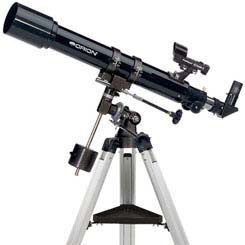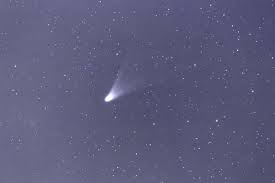One of the more wide-range things to use in astronomy are filters. There are a large number of them and their purpose varies greatly. They can reduce light, help with light  pollution, bing out details, or help with astrophotography. Most filters thread on easily to telescope’s eyepieces and can change your viewing experience.
pollution, bing out details, or help with astrophotography. Most filters thread on easily to telescope’s eyepieces and can change your viewing experience.
But when choosing filters one must remember this: They are filters, they are designed to remove something, even if it is unwanted. Some folks get the idea, especially with light-pollution filters, that filters make objects being viewed much brighter. But that is not the case. Think of it this way: if you have a kitchen odds are ou might have a water filter in your faucet or some kind of pitcher. When you use this filter you do not make more water by using it, you are merely removing the stuff in the water you do not want. Water filters are actually pretty good because if you put 1 liter of water over a water filter odds are you will end up with very close to 1 liter of clean water. But you won’t end up with 1.1 liters. Sounds obvious, but some folks get the idea that that is what astronomy filters can do. But it is not so. In fact using an astronomy filter on the light from the stars means you are going to lose some of the good light along with the stuff you do not want. If we go back to out water filter you can think of our 1 liter of unfiltered water becoming .9 or even .8 of a liter.
But let us discuss the various types of filters:
Moon Filters
Moon filters are simple neutral density filters (which means they evenly cut down on light across the visible spectrum) that thread onto your eyepiece. They are used because the Moon is actually very, very bright and viewing it in even small telescopes at it can hurt your eyes after a short time (not permanently, mind you). A Moon Filter can make viewing more comfortable. Typically filters allow in 25% of the light, or 12% (for larger telescopes) or in a variable model you adjust yourself .
Solar Filters
Solar filters are the only filters that do not thread onto the eyepiece. The go over front of the telescope. If you find a ‘solar filter’ that is meant to thread onto an eyepiece, destroy it immediately. Those are very dangerous as they can crack letting through sunlight that can damage your eyes. Don’t use them, Don’t keep them – someone else might be tempted. Destroy them.
Most solar filters are simple screens of Mylar that cuts down on 99.999% of the light so that you can safely view the sun. Mostly what you will see is a white disc with some sunspots. It makes for some nice viewing during the high points of the sunspot cycles, during the lows the sun can seem a bit featureless, however.
Another type of Solar Filter is the Hydrogen-Alpha Filter. These allow you to view reddish colored prominences and solar flares. They are very expensive, however (in the thousands of dollars) and they need a certain amount of ‘tweaking’. But they can give very impressive views of solar activity.
Color Filters
Color Filters are used on the planets or the Moon – they cut off too much light to use on deep sky objects. Color filters are used to try and bring out more details on the  planets that might get washed out in regular filtering. Details brought out might include the bands on Jupiter, polar caps on Mars, more lunar crater detail, and so on. Color filters can be hit-or-miss among astronomers. Some think they are great, others find them less useful. The field seems rather subjective but if you plan on viewing the Moon & Planets more than anything else you might wish to invest in a set.
planets that might get washed out in regular filtering. Details brought out might include the bands on Jupiter, polar caps on Mars, more lunar crater detail, and so on. Color filters can be hit-or-miss among astronomers. Some think they are great, others find them less useful. The field seems rather subjective but if you plan on viewing the Moon & Planets more than anything else you might wish to invest in a set.
Light Pollution Filters
Light Pollution Filters are designed to help astronomers who live in light-polluted suburbs or cities. They are not a substitute for dark skies, but they can certainly help out when options are limited. Light pollution filters help by cutting down on frequencies of light that streetlights, parking lot lights, and other human-made light sources produce, while letting through most of the light that stars, nebulea, and other deep sky objects emit.
This set of quickie photos can give you and idea of the effect of the filters. Here is a shot of a city streetlamp that is on during the daytime:

Street Lamp, through a phone camera, daytime, unfiltered.
And then with an Orion Ultrablock Filer held over the lens:

Same streetlight, with light pollution filter held over the camera lens. Note the difference.
You will notice that the filter helps, but does not completely eliminate the streetlight light, and it does have some effect on the natural background light as well. This is why they are helpful but not a complete solution to dark skies.
Light Pollution filters also are of little use on the Moon (which is bright enough to not be bothered by light pollution) or the major planets (which are similarly unaffected by light pollution). They are of limited effect on the outer planets as those planets emit light over much of the spectrum and get filtered as much as the background light.Some light pollution filters may be referred to as Nebula filters, which are very focused and are even designed to cut down on some of the light from nearby stars.
Astrophotography Filters
There are a huge number of these and their uses could fill a book – a book about astrophotography that is. These filters do things like cut off the IR portion of the spectrum (which messes up CCD chips in digital cameras) or filters out only the all but the Red or Green or Blue part of the spectrum for monochromatic cameras. The number of these filters has expanded vastly in the past few years. Covering these would take a very large entry so we will leave them for now as it is beyond the scope of Astronomy Hints.
Refractor Violet Filters
These filters are for one type of telescope – refractors. The large lenses in these telescope sometimes act as prisms and break up the light into component colors. This is especially noticeable on bright objects like Jupiter or the star Sirius. The effect is that the object being viewed will have a violet colored halo that is affectionately known as ‘purple haze’. Violet-Minus filters cut out this portion of the spectrum without affecting overall viewing much. If you have a larger refractor that sometimes shows the ourple haze you might consider getting one of these filters.
www.spectrum-scientifics.com




 wise to
wise to 


 skipped. This can result in a frustrating experience for a budding young astronomer who may give up their new hobby prematurely. This can be avoided if you only take the time and a few precautions to make certain you get the baby steps out of the way without too much tripping and falling.
skipped. This can result in a frustrating experience for a budding young astronomer who may give up their new hobby prematurely. This can be avoided if you only take the time and a few precautions to make certain you get the baby steps out of the way without too much tripping and falling. magnifications on a short focal length telescope only see a little under 1 arc degree of the sky. This is a tiny portion of the sky so hoping to find an object with just the eyepiece is really hard to do. There is a reason why almost all telescopes come with a finder scope. So make sure to align it (During the daytime per suggestion #1) . If your telescope comes with a red-dot finder instead of an optical finder scope, be certain to carefully align that as well during the daytime – and don’t forget to switch it off! A dead battery in a red dot finder is nobody’s friend.
magnifications on a short focal length telescope only see a little under 1 arc degree of the sky. This is a tiny portion of the sky so hoping to find an object with just the eyepiece is really hard to do. There is a reason why almost all telescopes come with a finder scope. So make sure to align it (During the daytime per suggestion #1) . If your telescope comes with a red-dot finder instead of an optical finder scope, be certain to carefully align that as well during the daytime – and don’t forget to switch it off! A dead battery in a red dot finder is nobody’s friend.






